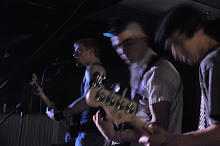
Citizen Kane is a film released in 1941 which was directed by and starred Orson Welles. This film chronicles the life of Charles Foster Kane through the eyes of those closest to him. It has many different aspects of several different styles of film making which make it a truly unique film. This movie was also way ahead of its time in cinematography and special effects. The narrative was also very different from other movies and made it stand out in 1941. The controversy surrounding this movie also made it very well known. The controversy was that the life of Charles Foster Kane was based on the life of William Randolph Hearst, a rich newspaper tycoon of the time. Hearst did everything in his power to destroy the movie, but was unsuccessful and the film remains a classic to this day.
The story is about a boy who is adopted when his mother gives him up after acquiring some wealth to get him away from his abusive father. Kane is taken in by a wealthy man named Walter Thatcher who provides the boy with everything he could have ever wanted. The film explains Kane's life and how he rose to wealth and power by only operating a once small newspaper. It then shows his trials and tribulations and eventual his fall from power.
The opening scene starts the movie off magnificently. The outside shots faded into each other then faded to an establishing shot of Kane's palace and continued to overlap and fade closer and closer to the room where Kane was lying. The close up to his lips and then the tracking shot of the snow globe falling were excellent followed by a quick zoom shot of the broken globe. The nurse walking into the room was only seen through the reflection of the broken glass. The use of reflections was used very well in this film. When Kane, Bernstein, and Leland are standing outside of the "Chronicle" building, they are only seen through the reflection of the window. Another shot that I thought was very creative was the close-up of the "Chronicle" staff that had the seamless transition to the same staff in real life in the identical pose only now working for the "Inquirer."
The narration of this film was very compelling and pulled me into the story. The way that everybody told Kane's story from different perspectives made it seem more realistic. The different characters each had their own personal experiences with Kane that had a major influence in their lives. The interviewing style used was very unique and made the film seem like an investigation. The reporter, Thompson, was a key character that helped me as the viewer to better understand the life and legacy of Kane and why he acted the way he did.
The overall style of the film was very impressive and way ahead of the times in 1941. The opening scene creating mystery, the news broadcast showing how the public viewed Kane, and the investigation and interviews of everyone close to Kane to uncover the identity of "Rosebud."
In the end, I thought that this was a very good film. I was very impressed by the amount of cinematography styles used throughout the movie. One of my favorite types was the deep focus which was used to show things in the distance and up close in the same clarity. Another aspect I liked was the establishing shots that showed the side of someones head to show where they were looking and then the close-up of what they were looking at. I was not too impressed by the fact that the whole plot revolved around "Rosebud" which was only Kane's sled from his childhood. Overall, I really enjoyed this piece of cinematic history, however, I would not call it the greatest movie ever made. I do not think that any one movie can be labeled the best when each has their own individual flaws and when there are still many more movies to be made in time to come.















